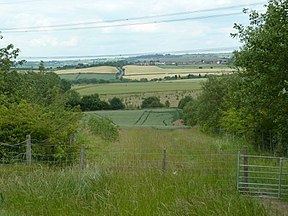Status destroyed by mining Start point Adelphi Ironworks Date completed 1799 Connects to Poolsbrook | Date closed unknown End point Staveley Road bridge Locks 0 | |
 | ||
The Adelphi Canal was a small privately owned canal in Duckmanton, near Chesterfield, England. It was used to transport goods from an ironworks to a wharf by the road. It is not connected to any other waterway; goods were forwarded by road to the Chesterfield Canal. It was constructed in 1799.
Contents
History
The Smith family were prominent in and around Sheffield towards the end of the 18th century, being involved in the iron and coal industries. This was the time of the American wars of independence and the Napoleonic wars, and Ebenezer Smith (1756–1827) had an iron works at Brampton which was producing military castings and Newcomen engines. The Smith family empire included mines at Calow, Hady, Hollingwood, Inkersall and Staveley, and ironworks at Brampton, Calow and Stonegravels.
The Adelphi Ironworks were built in Long Duckmanton around 1799. Twin furnaces could produce 900 tons of pig iron in a year, which was used for the production of munitions. Because of the poor condition of the roads, many ironworks produced goods during the winter which were stockpiled until the summer, when transport was easier. To ease the problem, Smith decided to construct a canal from the ironworks, which followed the course of the Poolsbrook stream to near the junction of Tom Lane and Staveley Road. From here it was a short distance by road to the Chesterfield Canal, where the cargos could be loaded onto boats for onward transport to the River Trent and beyond. The canal was supplied with water which was pumped from the mines by a Newcomen engine, which had been modified by James Watt.
The canal was constructed as a wooden trough, and was about half a mile (0.8 km) long. Small boats were used which were capable of carrying 1.5 tons, and all goods had to be transhipped twice to reach the Chesterfield Canal. An obvious solution would have been to continue the canal along the line of the Pools Brook, but this crossed the Duke of Devonshire's land, and there may have been difficulties negotiating this, as later developments hint. The ironworks ran into difficulties in the 1820s, with accusations of illegal mining activity, and the Duke of Devonshire cancelled a lease which the Smith family had for mining coal at the Staveley Upperground colliery and ironstone at the Hady mines in 1832. There do not appear to be any records of when the canal ceased to be used.
Today
The location of the Adelphi ironworks and the start of the canal were situated just to the north of the present location of Arkwright Town. The village was originally on the south side of the Chesterfield road, but was demolished and a new village built to the north of the road, as the houses were affected by methane gas from the mines. Remnants of the works were preserved in the buildings of Works Farm until at least the 1980s, but recent mining expansion has resulted in the surrounding area becoming a vast opencast mining site, and nearly all traces of the canal and the ironworks have gone. Even the course of the Pool Brook is gone, as the land has been stripped away, although the weigh bridge and pattern shop still remain.
